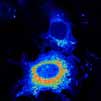The EU plans to amend Regulation (EC) No 1881/2006 to set maximum cadmium levels in chocolate, amid concerns that the heavy metal causes kidney failure and increases the risk of cancer.
Cameroon, Colombia, Ecuador, Ghana, Mexico, Nicaragua and Peru argue that the amendment will threaten their exports and the livelihoods of smallholder cocoa farmers.
Cadmium in chocolate
In a January EFSA scientific report, sugar and confectionery was seen to contribute 4.3% of adults’ dietary exposure to cadmium. This figure rose to 7.3% for children.
Chocolate and cocoa products account for almost all the exposure in the confectionery segment.
Maximum cadmium levels exist for a number of foods, but there are as yet none set for chocolate.
WTO members’ concerns
The dissenting countries raised concerns at the EU’s plans to introduce such levels in a World Trade Organisation (WTO) meeting on 10–11 July 2012 and submitted requests in a paper the following week.
The countries called on the EU to “clearly demonstrate” the contribution of chocolate to dietary cadmium exposure and its adverse effects.
The nations demanded that EFSA and the FAO/WHO Expert Committee on Food Additives (JECFA) work together to set tolerable weekly and monthly intakes for cadmium in chocolate.
The WTO members also urged the EU to take account of contamination and cadmium loss in the production process, as well as contributions from other foods such as cereals and vegetables.
They also pressed for harmonised methodologies to determine cadmium content in chocolate and asked for a five year transition period to allow producers to adapt to the measures.
Other worries
European Commissioner Dalli had invited cocoa producing countries to submit further occurrence data on cocoa products.
Two unnamed member states expressed strong disagreement, arguing that food commodities contributing most to exposure, such as grains, would not be targeted by lowering maximum levels in chocolate.

Cancer risk
Cadmium is a heavy metal that occurs in the environment generated by volcanic emissions and the degradation of rocks, as well as from industry and agriculture.
It collects in the soil, water, and air, from where it is taken up by plants and animals eaten by humans.
The International Agency for Research on Cancer has classified cadmium as a human carcinogen and links the metal to increased risks of cancer.
The highest levels of human exposure in food are found in grains and vegetables.
Setting levels in chocolate
According to the Commission, cadmium is linked to the total dry cocoa solids in cocoa beans. Cocoa beans take cadmium naturally up from the soil, therefore cadmium levels can be different in cocoa beans grown in different geographical areas.
In a standing committee in November last year, the Commission proposed higher maximum cadmium levels for dark chocolate as more of the heavy metal seemed to be in chocolate with higher cocoa content.
The commission has told this site that a possible amendment of the existing EU regulation could at the earliest be adopted by end of 2012.
